The other day, after weeks of should I—should I not, I finally decided I should watch the 2017 The Mummy. I’ll admit I had low expectations, but The Mummy succeeded in showing me that even those expectations had been too high. This was a crazy mix-up of everything from an ancient mummy come alive to some medieval Crusaders, to Dr Jekyll, trying desperately to keep his evil alter-ego in check. There were crows, there were rats and spiders swarming all over the place, there was dust and sand and pools of mercury. There were gibbering skeletons racing madly about, pursuing our hero and his lady love left, right and centre.
About time, I thought, that I finally saw why a lot of film buffs rate these newer versions (I’m also referring to the 1999 Brendan Fraser-Rachel Weisz-Arnold Vosloo The Mummy) as pale copies of the original The Mummy.
The Mummy begins at an archaeological dig in Egypt in 1921: a British team is at work and has excavated some valuable objects. Of prime interest are a sarcophagus containing a mummified man, and a box with an ominous message on it. Occult expert Dr Muller (Edward Van Sloan) has a close look at the sarcophagus and its contents, and comes to an unsettling conclusion: that the man in it, whose name (inscribed on the sarcophagus) was Imhotep, a high priest at the temple of Karnak, was punished for some crime and doomed to eternal death.
This last bit Muller is able to decipher from the fact that the traditional words, ushering the soul on its way to the afterlife, that are inscribed on the inside of the sarcophagus, have been scratched out.
Muller’s words don’t really impress the two archaeologists here. Sir Joseph Whemple (Arthur Byron) and his assistant Ralph Norton (Bramwell Fletcher) are more eager to get along and unwrap the mummy. Muller dissuades them—who knows what evil they will unleash? Sir Joseph agrees to put it off for the time being, but it’s obvious that he doesn’t believe any of this occult claptrap of Muller’s.
Muller has another warning in store for the two archaeologists: do not, in any event, open the box. The message on it is clear: the box contains a curse, which will let loose evil on the world. Muller does some more interpretation of the hieroglyphics (which Whemple and Norton too can read) and comes to the conclusion that the box contains the Scroll of Thoth, which Isis used to raise Osiris from the dead.
Again, Whemple and Norton don’t look at all convinced, but Whemple has other work to do anyway, and he and Muller go off, leaving Norton to continue his work by himself. Norton, after a few minutes, lets his curiosity get the better of him. He opens the box (which opens rather too easily for something that was supposed to contain something so vicious—all he does is prise off a seal and lift the lid). And there is the scroll!
Norton takes it out, puts it down on the table, and begins to spell out the words written on the scroll. Behind him, in the sarcophagus that’s standing, there is a barely perceptible movement. Then the mummy (Boris Karloff) opens its eyes. Even as Norton finishes reading out the incantation, all the while unaware of what’s happening behind his back, the mummy’s hands move.
The next thing we see is a bony hand, wrapped in dry old bandages, reaching out for the scroll. Then, another bandage trails on the floor in the wake of someone we never see, disappearing through the doorway, while Norton laughs hysterically. Where the scroll lay on the table is now nothing except a very dusty handprint. When Whemple comes rushing into the room, it is to find Norton still laughing madly.
And madness it is, as we discover next.
Eleven years later, another expedition, also British (organized by the British Museum) is in Egypt. Professor Pearson (Leonard Mudie) is heading this team, and his assistant is Frank Whemple (David Manners). Frank is the son of Sir Joseph Whemple, and through a conversation between Frank and Pearson, we are told that Norton went insane, though what drove him so suddenly insane could not be ascertained, because he died soon after that 1921 expedition. The scroll and the mummy of Imhotep are believed to have been stolen: at any rate, neither has been seen again.
Since then, Sir Joseph Whemple too has distanced himself from these archaeological digs in Egypt, despite being the prominent Egyptologist that he is.
This particular dig, anyway, is proving to be pretty disappointing. They’ve dug up next to nothing of any value. Frank and Pearson are now getting ready to move on; there seems little point in hanging around at this site any longer.
Just then, a stranger arrives. This man (Boris Karloff again, looking as impassive as in his brief appearance as the mummy, even though he’s now in modern Egyptian attire) tells them his name is Ardath Bey, and hands over an interesting little fragment of pottery. On it is inscribed the name of the Princess Ankh-es-en-amon of the 18th Dynasty. Both Frank and Pearson are intrigued by this, and even more so when this taciturn and mysterious visitor informs them that he is certain the tomb of Ankh-es-en-amon is somewhere in the vicinity.
In fact, Ardath Bey’s estimate of where the royal tomb is located is so precise that the expedition’s workers, digging, are soon able to reach it. This is a huge find for the expedition: an unplundered, intact tomb, and that too of a princess, no less. It makes news. Frank’s father, Sir Joseph Whemple, is also excited enough to come out of his self-imposed exile and return to Egypt.
Frank is a little miffed that though the expedition was organized by the British Museum, the Cairo Museum gets to keep all the artefacts. That, however, is part of the contract, so there’s nothing the Brits can do about it.
We now move on, to a party where we are introduced to an acquaintance of Dr Muller’s (who is also in Egypt). This is Helen Grosvenor (Zita Johann), daughter of a wealthy and prominent Englishman and his Egyptian wife. Helen’s lineage on the distaff side is a mile long, remarks Dr Muller.
While Helen is dancing at the party, an unexpected visitor arrives at the Cairo Museum: Ardath Bey comes into the room where the sarcophagus of Ankh-es-en-amon is displayed. The guard stops him, informing him that the museum is closing now. As it happens, Sir Joseph Whemple is passing by, and on seeing Ardath Bey, says that the treasures in this room would never have been found had it not been for Ardath Bey. He certainly has more right than anyone else to look around here for a few minutes even after closing hours.
Before leaving Ardath Bey, though, Sir Joseph takes the Egyptian into the office to meet Frank. An invitation from Whemple for Ardath Bey to come and visit their home is turned down brusquely—Ardath Bey says he has little time for such matters—and when Sir Joseph reaches out to touch the man on his sleeve, Bey draws back, saying he does not like being touched. “A strange man,” is Frank’s verdict, when Bey has gone off again to the chamber he wanted to visit.
… and strange he is. Because there, beside the sarcophagus of Princess Ankh-es-en-amon, Ardath Bey kneels with a lamp and a scroll. He murmurs an incantation, reading from the scroll. Even as he’s doing this, the guard, going about checking each room, enters. Ardath Bey looks up, surprised, and quickly extinguishes the lamp. But the guard has already seen too much; sometime later, other guards in the museum find him dead, next to the sarcophagus of Ankh-es-en-amon. Also left behind is the scroll, one which Whemple and Muller recognize as the dreaded Scroll of Thoth, stolen in 1921.
And across town, at the party, Helen Grosvenor suddenly feels disoriented and dizzy. She breaks away from her partner, and looking oddly disconnected from the party around her, makes her way to the cloak room, where she imperiously demands—just by gesture—her furs.
Then, just as imperiously (and looking as if she’s in a trance), she goes out, down the steps, and has the attendant summon a car. This she gets to drop her off at the Cairo Museum. The museum is closed, and Helen, arriving at the shut doors, suddenly seems to go all to pieces: she bangs on the doors, weeping hysterically and begging to be let in. Frank Whemple finds her here, and she faints right there on the doorstep.
… with the result that she is taken to where Whemple, father and son, are staying, to recover. Dr Muller, who is in attendance (he is a medical practitioner, besides his interest in the occult), is startled to hear the words Helen is muttering in a daze: “Imhotep! Imhotep!” There is something very disturbing here, he tells Sir Joseph Whemple. When Helen finally comes to, the two older men go off to discuss this, leaving Frank with Helen.
This set-up being very conducive to the two people quickly falling in love with each other. So quickly, in fact, that when Whemple and Muller enter the room shortly after, it’s to find Helen and Frank kissing each other. Quick work, but Muller comes to dampen their ardour. Ardath Bey, he is now certain, is none other than the resurrected mummy of Imhotep, and he is working some evil magic, using the Scroll of Thoth. But the scroll, accidentally left behind by Ardath Bey at the Cairo Museum, is now in the possession of Sir Joseph Whemple, which automatically puts the Whemples at risk. And what exactly is Ardath Bey’s interest in Helen?
I admit that I had high hopes of this, the original version of The Mummy. Just going by the number of reviews on IMDB, it’s easy to see that this is quite a cult classic. And in some ways, it does deserve the title of ‘cult classic’, because this (unless I’m very far off the mark) was the first film that used the motif of an evil, ancient mummy coming alive in the modern day and wreaking havoc. There is something inherently gruesome and grotesque about the idea, so it’s no wonder that it has survived so long—though later films have treated this concept very differently (and more graphically) than did director Karl Freund here.
Because what I liked and didn’t like about The Mummy (1932) has a good bit to do with why I liked (or didn’t like, at all, in the case of the latest The Mummy) the reboots, let me discuss this all in one go.
Comparisons, and what I liked and disliked about this film:
The 1999 The Mummy, with Brendan Fraser and Rachel Weisz, is the one I first watched. I have watched it several times since it was first released, and I confess that I love it. True, it has its cheesiness, its fairly predictable (by now) twists and turns, but it’s still thoroughly entertaining, and a good bit of that has to do with the humour of it. Brendan Fraser, always a good comic hero, strikes the perfect balance between being handsomely heroic and being laugh-out-loud-funny, and the story itself does have a passing resemblance to that of the 1932 The Mummy.
The 2017 The Mummy has much less in common with its earlier namesakes; this one is also about a resurrected mummy (that of an evil and ambitious princess), but in this case, the motive is different: instead of resurrecting an old lover, she wants to use a human body (that of the hero, played by Tom Cruise) as a vessel for the God of Death, Seth, who she thus hopes to get on her side.
I won’t even begin to compare the 1932 and 2017 films; they are too unlike each other to merit a comparison. But the 1932 and 1999 films, even if very different, do have some points of resemblance (the 1999 one was, after all, a loose remake of the 1932 one). The main difference is in the visuals and the pace: the 1999 film is frenetic, every little lapse into quiet and peace acting as a lull before a sudden fright. Plus, the CGI dominates: thousands of scuttling scarabs, burrowing deep into live bodies; mummies coming alive and walking the streets; winds forming howling mouths in the desert… it has the works.
The 1932 film has Boris Karloff.
And Boris Karloff, really, is miles ahead of Arnold Vosloo in the ‘scary mummy’ department. His gaze is disconcerting and creepy; the face, wrinkled and lantern-jawed, is far more unsettling than Vosloo’s (who’s actually pretty well-chiseled, and has to rely on CGI—or was it makeup? —to give him that sinew-visible-through-the-cheek look). Also, Karloff’s Imhotep doesn’t believe in loud shrieking and jumping about and frightening action (all of which Vosloo does): his menace comes from the fact that he pretends, and fairly convincingly, to be a 20th century human being. Taciturn, perhaps a little odd, but believably a man. He doesn’t scream, he doesn’t raise up demons (or demon creatures) from hell, he merely uses a little magic to show the past, and to try and resurrect his lost love.
That ‘lost love’ angle is also where the two films differ in treatment: Ardath Bey’s efforts to bring back Ankh-es-en-amon are somehow worthy of sympathy: you can feel for him, for his deep desire for her, even if his method of going about it—by using Helen Grosvenor, whom he’s convinced is a reincarnation—is wrong.
Arnold Vosloo’s Imhotep, even in his back story, is a character who’s guilty of something unethical, and his way of getting his lover back in this day and age means he stops at nothing: in fact, goes out of his way to recruit every possible force of evil to accomplish his goal.
(That his lover is perhaps even more evil than he is makes them, as a pair, also less an object of sympathy; I never wanted them to ‘win’, so to say. With Ardath Bey and Ankh-es-en-amon, there was a wee bit of understanding, which was perhaps heightened by the fact that Helen Grosvenor’s romance with Frank is so hurried and hard to believe that she may as well allow Ankh-es-en-amon ‘come to life’ through her).
Basically, the 1932 film is quietly unsettling, interesting but not outright frightening. I wouldn’t, really, call this a horror movie: not once did I feel really scared out of my wits, though there were moments (that bandage trailing out the door, Boris Karloff’s eyes boring into the camera) that induced a shiver. The 1999 is rather more a reflection of its times: action-packed, fast-paced, with a very in-your-face horror.
Which did I like better? I’ll be the iconoclast here: the 1999 one. It’s much more entertaining, and the combination of humour (completely missing from the original) and romance (too unbelievably hurried in the original) is delightful.

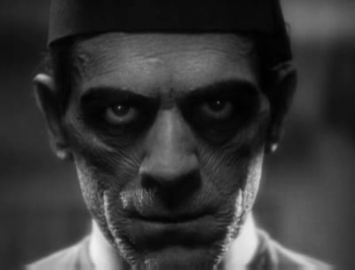
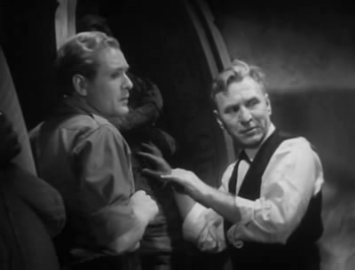
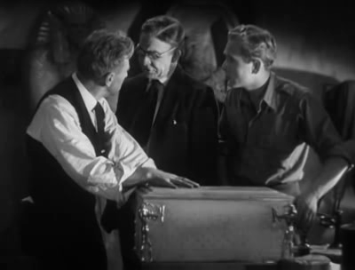


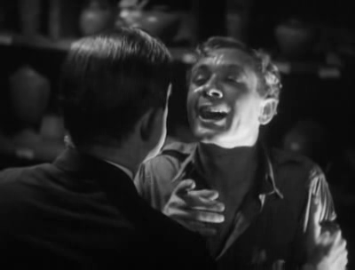
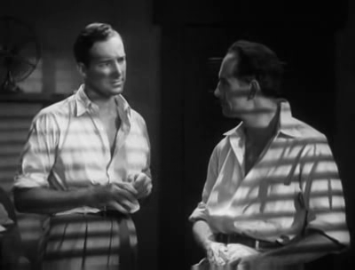
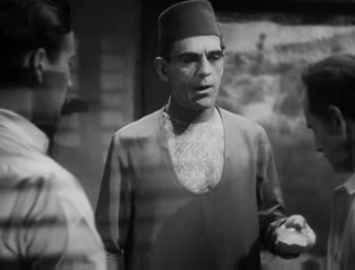

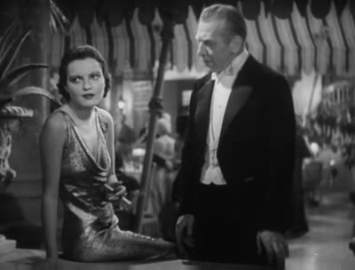
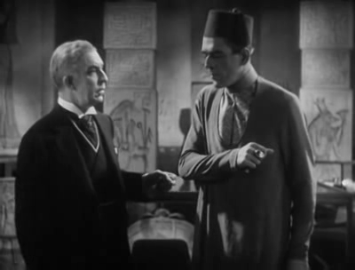

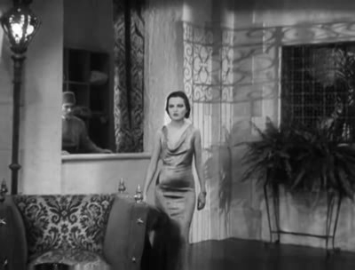


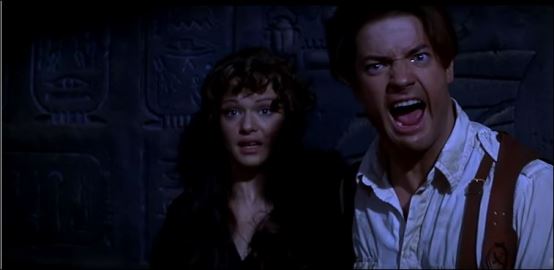


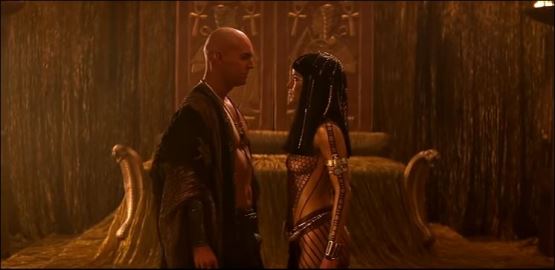
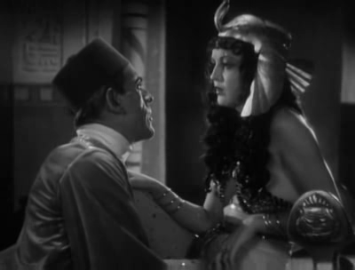
When it comes to horror films there is a blog I follow religiously since last several years. It’s called Horror Movie a Day (http://horror-movie-a-day.blogspot.in) and is a treasure trove of horror films all the way back from the silent era to the latest releases.
There’s an excellent review of The Mummy (2017) posted there recently: http://horror-movie-a-day.blogspot.in/2017/07/the-mummy-2017.html
Also, he seems to share your views about the original: http://horror-movie-a-day.blogspot.in/2008/12/mummy.html
LikeLike
Thank you for pointing me to those blog posts. They made for interesting – and amusing – reading!
LikeLike
You make it sound almost interesting, Madhu. I have watched the 1999 version and been, as you, highly entertained, purely, I must confess, beecause of Brendan Fraser. Plus, it was so cheesy that never did I really feel ‘horror’. Which is good, because that’s a genre I like at all. I didn’t know there was a 2017 version.
The 1932 version is ‘almost’ interesting because I’m not sure if I’ll ever watch it. I think I might just enjoy it vicariously through your review.
LikeLike
Heh. Yes, Anu, I like the Brendan Fraser one too because it’s just so cheesy (not to mention humorous) that I never felt really scared. Like you, horror isn’t a genre I like. Monster movies, yes, but not stuff like The Omen (which I still haven’t been able to summon up the courage to watch).
No, don’t watch the 1932 The Mummy. Karloff is creepy and therefore good, but the rest of the film is really rather insipid and not worth your time.
LikeLike
Nice review Madhu. I haven’t watched any Mummy movies. My relevant experience is limited to the Mummy ride at Universal which was quite thrilling. :)
Not sure if I have stomach for horror movies (especially grotesque kinds) but I do like Hitchcock movies, perhaps because they have more mystery and suspense elements than horror, I think.
Though after reading your review, I feel like watching these mummy movies despite my aversion to this genre. The humorous element can be very interesting though. You mentioned that exists in the 1999 version which has humor elements mixed in. Perhaps that’s where I will start. Mixing humor with horror, the only I remember (and like) is Peter Sellers’ Murder By Death. But then it wasn’t quite horror but more of a mystery/suspense..
http://www.imdb.com/title/tt0074937/
LikeLike
“but I do like Hitchcock movies, perhaps because they have more mystery and suspense elements than horror, I think.”
I agree, though I will admit The Birds gave me the shivers. I watched it at a time when we lived in an upper storey flat with a large balcony, and right opposite our house was another balcony where the people used to put out birdseed and water. Huge flocks of crows used to come to their balcony to feed and drink, and they’d always sit on our balcony as well. If I hadn’t seen The Birds, I’d have happily gone out on to the balcony when the crows were around, but the film made me inordinately nervous of them for a while!
Glad you liked the review, Ashish! Thank you. And if you do decide to watch one of the The Mummy movies, make sure it’s the 1999 one – that’s the best of the lot. It’s funny, it’s cheesy enough to not be really frightening, and both Brendan Fraser and Rachel Weisz (not to mention the actor who plays her brother) are brilliant.
LikeLike
Thanks Madhu. I will start with the 1999 version.
LikeLike
Beware, cheesy! ;-)
LikeLike
I remember watching a movie called ‘The Curse of the Mummy’s Tomb’ as a child. It released in 1964 and maybe I watched it a year or two later. I was frightened out of my wits and had many many nightmares about the murderous Mummy. I do remember that the ‘mummy’ spared the girl he was in love with, killing most others. And the story seems kind of familiar.
I adore The Mummy (1999) for the same reason as you, I love the chemistry between Rachel Weisz and Brandon Fraser. The first time I saw it, it was dubbed in Hindi. It was the only print showing in Chandigarh at the time. Oddly, the theme of Mummy translated very well into Hindi, and the translation did not jar.
LikeLike
That was interesting to know.
In the 50s and 60s, British studio Hammer Productions went on an acquisition spree for many properties such as Dracula, Frankenstein, The Mummy etc. which were owned by Universal Studios. The Curse of the Mummy’s Tomb is one of those Hammer productions on the Mummy creature. So yes, it does share a long-winded link with the original The Mummy also.
LikeLike
I am more and more tempted to try looking for it.
LikeLike
Sometimes i wonder how the Saint’s sidekick Hoppy Uniatz,the yankee yokel,would have dealt with the murderous mummy,would he shoot the apparition with his betsy or bop him on the head with a crowbar.There really should be a match between different fictitious characters.
LikeLike
Heh! That’s an idea. :-D Something like The League of Extraordinary Gentlemen?
LikeLike
Universal made a number of crossovers in the 40s such as House of Dracula, Frankenstein Meets the Wolf Man etc. I don’t know if the mummy appears in any of them, though.
LikeLike
That’s interesting, Ava! I don’t recall ever watching a Hollywood film dubbed in Hindi, though I do know that Tarun has watched some Chinese martial arts films that were dubbed in Hindi, and he said it didn’t make any difference, really. But the fact that The Mummy didn’t jar even when translated – that says a lot for whoever did it.
I have heard of The Curse of the Mummy’s Tomb but haven’t got around to seeing it. Someday, maybe, if I can lay my hands on it…
LikeLike
I should warn you in advance that Hammer horror productions tend to be an acquired taste to a casual horror viewer. They may be tame by today’s standards but back then they were notorious for their shock tactics such as liberal use of bright red blood. In some ways they were the forerunners to the Ramsay style of horror films, just a lot classier and more atmospheric.
LikeLike
Ah. I am curious, now.
LikeLike
You know, I had absolutely no idea that the 1999 Mummy was a re-make. And as usual, your review makes me want to watch the 1932 version :-))
Like you, I enjoyed the Brendon Fraser-Rachel Weisz starer thoroughly- to the extent of once sitting through its hindi dubber version on Set Max once!! The dubbing is spot on hilarious and the fact that the original is so funny added to the fun- an absolutely inane delight! Part two-The Mummy Returns- might not be as good as the prequel but it still managed to retain the essence of the characters & provided a good backdrop to the whole story. However, the trailer for the 2017 one put me off completely- it seemed to revel in the gore & it felt like Tom Cruise was desperately trying to look, well, cool, something which Fraser & Wesiz just sailed through.
I also feel that what worked for the 1999 one was that every character had something to do and even with the frantic pace of the film, it never felt rushed or cramped.
Gosh- do write more posts about re-makes! :-))
LikeLike
Thank you! Glad you liked this post! I too loved the 1999 film, and didn’t mind the sequel to it, either, even though I didn’t think it was as good as the first film. But the third film in the series… *shudder*. If they couldn’t get Rachel Weisz, they should’ve scrapped that. Even otherwise, it was such a forgettable film…
But, honestly, I wouldn’t advise watching the 1932 film. The 1999 one is a very loose remake, and the 1932 one is both tame and unexciting (plus, of course, lacking any humour). Better left unseen, is what I say. Yes, Boris Karloff is good, but the rest of the film is meh.
Gosh- do write more posts about re-makes! :-))
There are several around on this blog, actually. Ben-Hur, True Grit, The Flight of the Phoenix, Plein Soleil/The Talented Mr Ripley, among others. Just have a look through the ‘Films I’ve Reviewed’ lists and you’ll spot some.
LikeLike
I have to confess, when I had originally put forward the suggestion that perhaps you ought to review the classic version, I myself had not watched it.
Now that I have, I will admit that it is rather dull and insipid by modern standards. But then again, a lot of horror in the silent era and early talkie era is. People back then were more easily unnerved and impressed by movie monsters. There are exceptions, of course: F.W. Murnau’s Nosferatu is genuinely scary, well paced and never dull.
The director Karl Freund was primarily a cinematographer and was responsible for the look of several memorable films: Metropolis, Dracula, All Quiet on the Western Front, The Last Laugh being some of them. That explains why this film is so rich in atmosphere if not much else. Freund directed some other films but the only film that’s survived the test of time is Mad Love and looking at its synopsis and cast, I am already excited for it.
Karloff is also wonderful as the doggedly obsessive Imhotep. It is a testament to his good acting that we sympathize with his intentions and goals even though his methods are misguided and evil. you mentioned that all he does is use some magic to show the past – but you forgot to mention that he is also pretty adept at causing long-distance heart attacks in his enemies. So it’s not as if his menace is limited to his stare – he is fully capable of messing you up pretty badly once he decides to.
One touch that I found impressive and maybe you noticed, too: When Imhotep hypnotically summons Ankh-es-en-amon the first time and Helen arrives at the museum, there’s a small detail not revealed to the viewer until later: Imhotep does not know what she looks like in this time. This is revealed later when he comes face-to-face with Helen. He finds her face familiar, yet cannot place her. Later, when Helen mentions that she arrived at the museum around the same time the guard was killed, that’s when he makes the connection.
The film never bothers to explain why is there a period of eleven years between the prologue and the rest. What was Imhotep up to in this period? Even the film’s (now defunct but preserved) IMDb message board does not offer any viable explanation.
Edward Van Sloan plays more or less the exact same wise occult professor character in Dracula, Frankenstein and this. In the first he plays Van Helsing, that enduring prototype behind all scholarly vampire hunters in fiction since then. In Frankenstein his role is of less consequence but again of similar nature.
In fact, the film’s plot structure is a lot similar to Dracula. The confrontation between Imhotep and Professor Muller is more or less the same scene as the confrontation between Dracula and Van Helsing in that film. Mina Harker, who is under Dracula’s spell is used as bait by Van Helsing to trap and kill Dracula. The same sequence is repeated here.
The flashback sequence is shot at a faster pace than the rest of the film to mimic the silent era filmmaking: another interesting touch.
As for the 1999 film, I liked it years ago but I don’t know how favourably I will look upon it today. There is a reason Fraser’s career faded out pretty quickly after the 90s: he’s just not that funny. He can be mildly, laconically funny in some stuff like Airheads or Encino Man but in this role he just came across as more awkward than assured. He falls short of the Harrison Ford stand-in that this Indiana Jones style screenplay calls for. Rachel Weisz is good at drama but this kind of goofy damsel in distress is a bit out of her reach. Because the original film is perceived as slow-paced and uneventful, the screenplay ends up overcompensating for it by being hyperactive to the point of annoying.
Last year, the popular internet movie critic/comedian figure Nostalgia Critic did back-to-back reviews on the 1999 and 2017 films (the latter a crossover with The Angry Video Game Nerd, another popular internet critic) and they are pretty spot-on about both the films’ shortcomings:
If you have never seen any of his reviews before, it’s fair to warn you that he can be rather shrill and shouty at times, so keep the volume somewhat down and it’s smooth sailing.
The Angry Video Game Nerd also did his separate short review of The Mummy here. He is also a good horror reviewer:
http://cinemassacre.com/2007/10/06/the-mummy/
And finally – not that this mammoth post needed any further embellishment apart from satisfying my random personal whim – here is a 80s hit by the all-female rock band The Bangles to take you down the memory lane:
LikeLike
I’m really really busy right now, because today has been the one day sandwiched between two bits of travelling. Let me read this carefully and at leisure once I’m back in town. Thanks for that long comment!
LikeLike
That’s no problem. Take your time.
LikeLike
Interesting comment. I rewatched – fairly recently, too – the 1999 The Mummy, and I still enjoy it. Including Brendan Fraser (whom I hated in what most people think of as his more popular comic roles, such as George of the Jungle). For me (as someone who doesn’t really care for the Indiana Jones series), Brendan Fraser’s character is a more believable hero because he doesn’t start off being the I-can-take-on-anything type: his first instinct on being faced with danger is to flee. Which is why I can relate to him. The character, and the actor as he portrays that character.
I have very little patience with shouting, screaming people, so shall give the Nostalgia Critic’s reviews a pass.
And, thanks for Walk like an Egyptian (how popular that was, once upon a time!) and for the Nosferatu recommendation. I have heard about it but have never got around to watching it.
LikeLike
Even I watch Nostalgia Critic’s reviews mainly for humour and silliness that provokes some good laughs, not actual insight (which he does manage sometimes but not often). AVGN’s reviews on CineMassacre are good, though. You can get many possible interesting recommendations there.
I have recently come in possession of a good copy of the 1959 remake of The Mummy by Hammer Films, with Peter Cushing and Christopher Lee. Since you have never dipped into Hammer classic territory before, perhaps I can lend it to you and you could schedule it exactly one year after this review, or further in October, the Halloween month.
As for The Bangles, they and other women in rock like them deserve to be forever popular. If they were, there would not be so few women in rock.
LikeLike
“I have recently come in possession of a good copy of the 1959 remake of The Mummy by Hammer Films, with Peter Cushing and Christopher Lee. Since you have never dipped into Hammer classic territory before, perhaps I can lend it to you and you could schedule it exactly one year after this review, or further in October, the Halloween month.”
Thank you! I will take you up on that offer, but perhaps for later – I have October lined up for a very special month, with all my posts dedicated to one theme. :-)
LikeLike